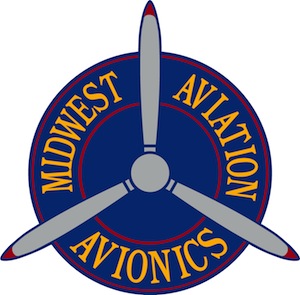|
|
Tracy: You are right on about the exit cooling area. The key is to direct it(discharge plenum) and accelerate it.I plan to use a Augmenter tube style exhaust that uses the exhaust to accelerate the discharge cooling air into the free stream of high pressure air out side the airplane. The faster you can get the discharge air out of the cowling and at free stream air speed. The better the system will work and need much smaller outlet area and a lot less drag. Also it is key to direct the discharge air to where you want it to go. Any pressure fronts under the cowling from cooling air wondering willy nilly about will cause serious problems with cooling. With the air coming in laminar and within soft spots in it(turbulent air) . You accelerate ...slow it down(defuser at the rad front) and accelerate it again. I did this with my Lancair 360 I built years ago. It was a cooling nightmare until I figured this out.( even a blind squirrel finds a nut now and again)picked up 12 KTS IAS and I could not over heat it under any circumstances. It will be fun to see if the Turbo 20B can be kept as cool as the IO360 using the same basic principles.
Tom Giddings
VP Avionics Sales MIDWEST AVIONICS 200 Hardy Roberts Dr PO Box 219 West Paducah,KY 42086 877-904 9966 Cell; 727 858-1772 FAX:270 744 3466 tom@midwestaviation.net

On Apr 28, 2011, at 10:54 AM, Tracy wrote: Tracy,
Wow! That is less than 40 sq in of inlet
area! Total!! How much exit area do you have?
You mentioned a pressure sensor. What pressures
are you seeing at wherever you measure it?
Bill B
Yep, not too bad for a 300 HP engine.
The total outlet area is 53 sq in. ,not including some louvers I put in the bottom of the cowl. The louvers didn't help at all so I plan to remove them. Outlets as large as 120 sq in were tried without seeing much change. I am more convinced than ever that the key to efficient & low drag cooling lies more in the inlet side rather than the outlet in under-cowl cooling system installations.
53 Sq in may sound like a small outlet for 300 HP but if you research the planes that are really going fast and cooling well at the same time you will find that they have a SMALLER outlet area than the inlets. I haven't been able to get there but it IS possible. It usually requires that the heat exchangers have ducts on the outlet side which is hard to do unless you use a P51 style cooling arrangement.
My air pressure instrument is a modified EM2 and is not calibrated in " of H2O or anything else. It just reads out the converted digital value of a sensor (same as the TAS sensor) so it's just a relative value. When the reading doubles it means twice the pressure. Someday I'll get around to converting the reading to something we are used to.
Tracy
On Thu, Apr 28, 2011 at 9:42 AM, Bill Bradburry <bbradburry@bellsouth.net> wrote:
Tracy,
Wow! That is less than 40 sq in of inlet
area! Total!! How much exit area do you have?
You mentioned a pressure sensor. What pressures
are you seeing at wherever you measure it?
Bill B
From: Rotary motors in aircraft
[mailto:flyrotary@lancaironline.net] On
Behalf Of Tracy
Sent: Thursday, April 28, 2011
9:08 AM
To: Rotary
motors in aircraft
Subject: [FlyRotary] Re: Cooling
Inlets
Finally
got around to finishing my cooling inlets. (pictures attached) Up until
now they were simply round pipes sticking out of the cowl. The
pipes are still there but they have properly shaped bellmouths on
them. The shape and contours were derived from a NASA contractor
report (NASA_CR3485) that you can find via Google. Lots of math &
formulas in it but I just copied the best performing inlet picture of the
contour. Apparently there is an optimum radius for the inner and
outer lip of the inlet. There was no change to the inlet diameters
of 5.25" on water cooler and 4.75" on oil cooler.
The simple pipes performed adequately in level flight at moderate cruise
settings even on hot days but oil temps would quickly hit redline at high power
level flight and in climb.
The significant change with the new inlet shape is that they appear to capture
off-axis air flow (like in climb and swirling flow induced by prop
at high power) MUCH better than the simple pipes. First
flight test was on a 94 deg. F day and I could not get the oil temp above 200
degrees in a max power climb. They may have gone higher if the air
temperature remained constant but at 3500 fpm the rapidly decreasing OAT kept
the temps well under redline (210 deg F).
I have an air pressure instrument reading the pressure in front of the oil
cooler and was amazed at the pressure recovered from the prop wash. At
130 MPH the pressure would almost double when the throttle was advanced to WOT.
That did not happen nearly as much with the simple pipes.
These inlets ROCK!
Tracy Crook

Midwest Aviation Avionics Logo.jpg
|
|